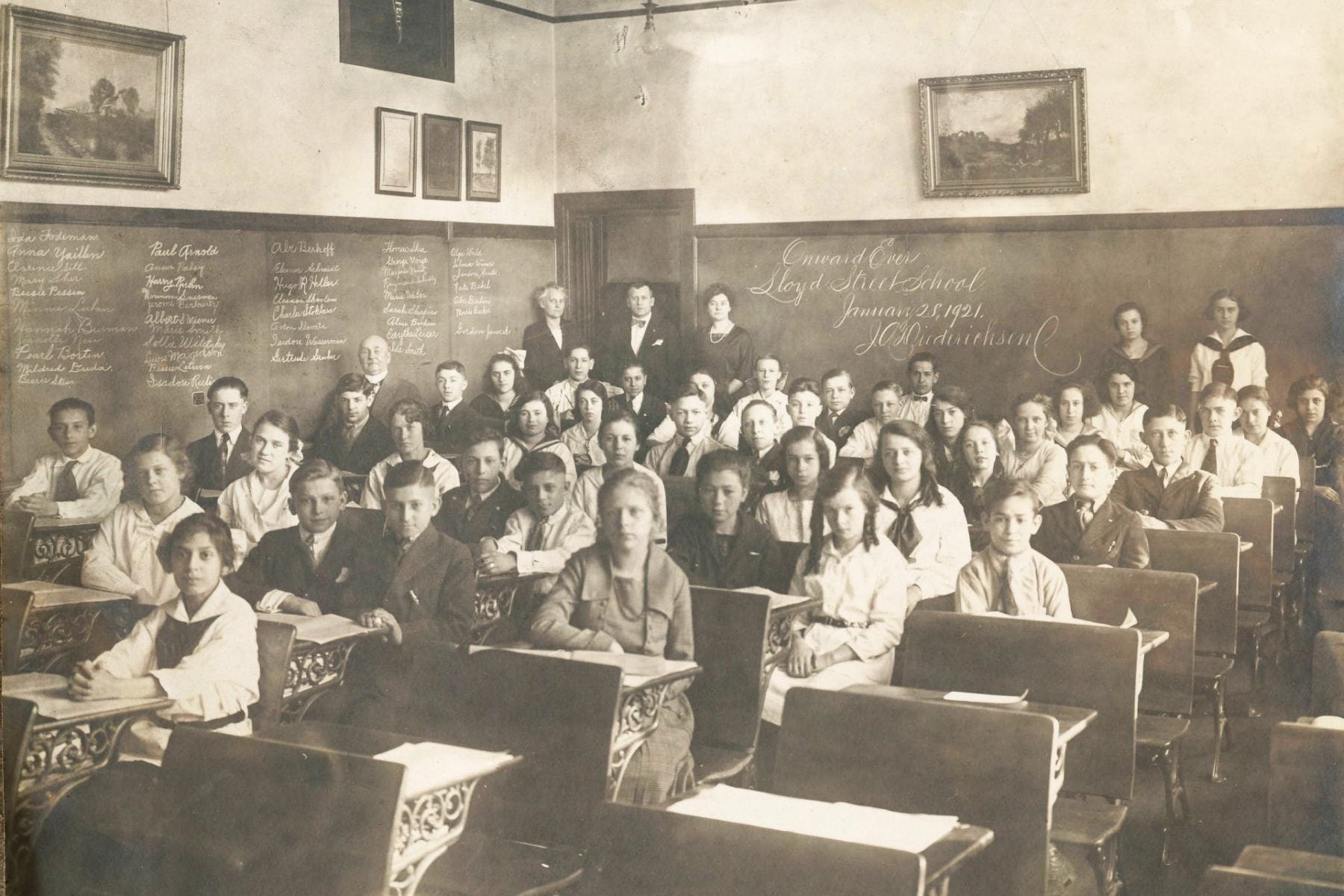Discipline is one of the most fraught issues faced by New York City’s schools—especially given data that shows that black students are four times as likely to be suspended from charter schools in the city. In fact, discipline is such a controversial issue in the city that when Mayor Bill de Blasio enacted policy changes on suspensions and discipline in school, it provoked widespread criticism from teachers’ unions and even sparked lawsuits. It’s tempting to look back to the “good old days” when schools were orderly and well-disciplined—but did those days ever really exist? Kate Rousmaniere looks at women teachers’ attempts to keep discipline in the 1920s and uncovers some uncomfortable truths about classroom management.
Because educational history has often downplayed the subjective experiences of women, writes Rousmaniere, it can be difficult to reconstruct what women teachers actually went through in the classroom. Rousmaniere attempts to chart the tensions of teachers as they navigated complex social expectations and ran up against contradictory ideologies.
In the 19th century, social norms demanded that teachers maintain total control in the classroom. But as times changed and progressive reforms were ushered in, teachers were expected to govern by moral persuasion rather than corporal punishment. As the teaching force became more feminized (women were not just idealized, but could be paid lower wages,) these contradictions came into sharp focus.Women teachers of the era were caught between idealized images of gentle, feminine influence and confusing, often cold conditions within NYC schools. Strict gender roles demanded that women draw upon their “maternal instincts” to instill order with ease. But when teachers faced harsh realities in the classroom, they often failed to meet those lofty goals and live up to the moral imperative placed upon them by their gender.
Even those women who thought they could draw on their own moral, maternal instincts in the classroom faced serious challenges. From a school system that tripled in size in 30 years to overcrowded schools and overwhelming bureaucracy, the deck seemed stacked against teachers. And then there were the students: As Rousmaniere explains, changing child labor laws diversified the classroom, but did not give teachers resources with which to meet a changing student population. Teachers did their jobs in classrooms with an average of 40 students each—many of whom had newly arrived in the United States, lacked parental involvement, did not have sufficient food or clothing, had to work before or after school, and were socialized in the gritty streets of a cacophonous city. Brooklyn teachers even had to contend with bomb-throwing students and riots during the early 1920s—outbursts fueled by poverty and social disadvantages at home.
Ultimately, the very qualities that were upheld as positive in women teachers—“femininity,” maternal care, gentleness—were seen as liabilities when it came to discipline. Caught between patience and professionalism, many women resorted to threats of physical punishment or succumbed to stress. But these methods were criticized by parents, members of the public, and even other educators, and “…criticisms of teachers for resorting to corporal punishment were directed primarily at women…because of a perceived weakness on the part of women to handle discipline problems.” Rousmaniere documents at least one teacher’s institutionalization after she expressed frustration with an unruly class, noting, “the social pressure to maintain the image of the nurturing teacher meant that a teacher who did admit to failure or frustration might be socially ostracized.”
“Classroom discipline problems were forever only teachers’ problems,” concludes Rousmaniere, who writes that social and institutional pressures were as responsible for disciplinary problems as teachers or students. Today’s classroom stressors may be different, but many of the tensions—and the fact that teachers need support as they navigate the dicey disciplinary waters of public schools—remain the same.







